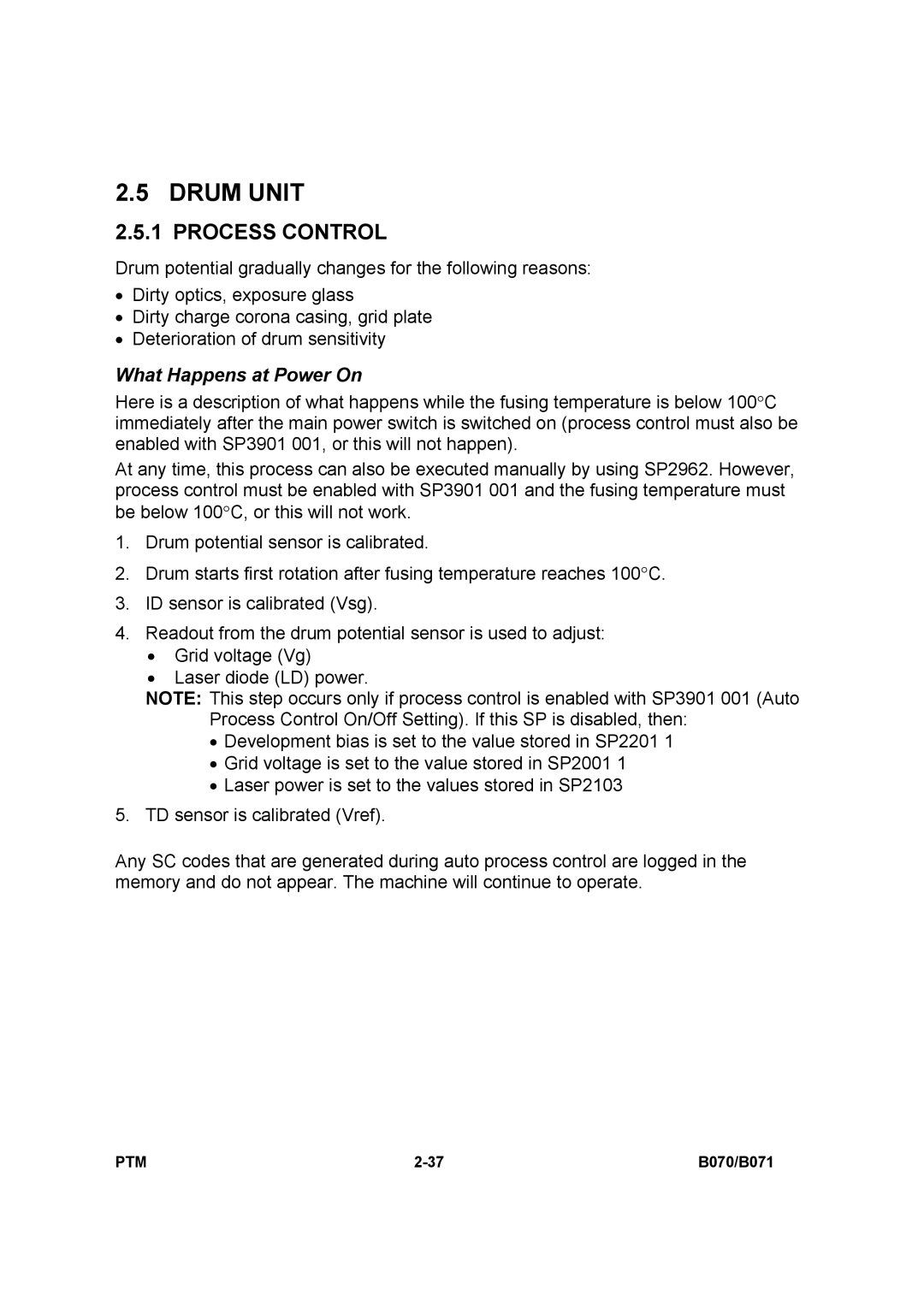2.5 DRUM UNIT
2.5.1 PROCESS CONTROL
Drum potential gradually changes for the following reasons:
•Dirty optics, exposure glass
•Dirty charge corona casing, grid plate
•Deterioration of drum sensitivity
What Happens at Power On
Here is a description of what happens while the fusing temperature is below 100°C immediately after the main power switch is switched on (process control must also be enabled with SP3901 001, or this will not happen).
At any time, this process can also be executed manually by using SP2962. However, process control must be enabled with SP3901 001 and the fusing temperature must be below 100°C, or this will not work.
1.Drum potential sensor is calibrated.
2.Drum starts first rotation after fusing temperature reaches 100°C.
3.ID sensor is calibrated (Vsg).
4.Readout from the drum potential sensor is used to adjust:
•Grid voltage (Vg)
•Laser diode (LD) power.
NOTE: This step occurs only if process control is enabled with SP3901 001 (Auto Process Control On/Off Setting). If this SP is disabled, then:
•Development bias is set to the value stored in SP2201 1
•Grid voltage is set to the value stored in SP2001 1
•Laser power is set to the values stored in SP2103
5.TD sensor is calibrated (Vref).
Any SC codes that are generated during auto process control are logged in the memory and do not appear. The machine will continue to operate.
PTM | B070/B071 |
